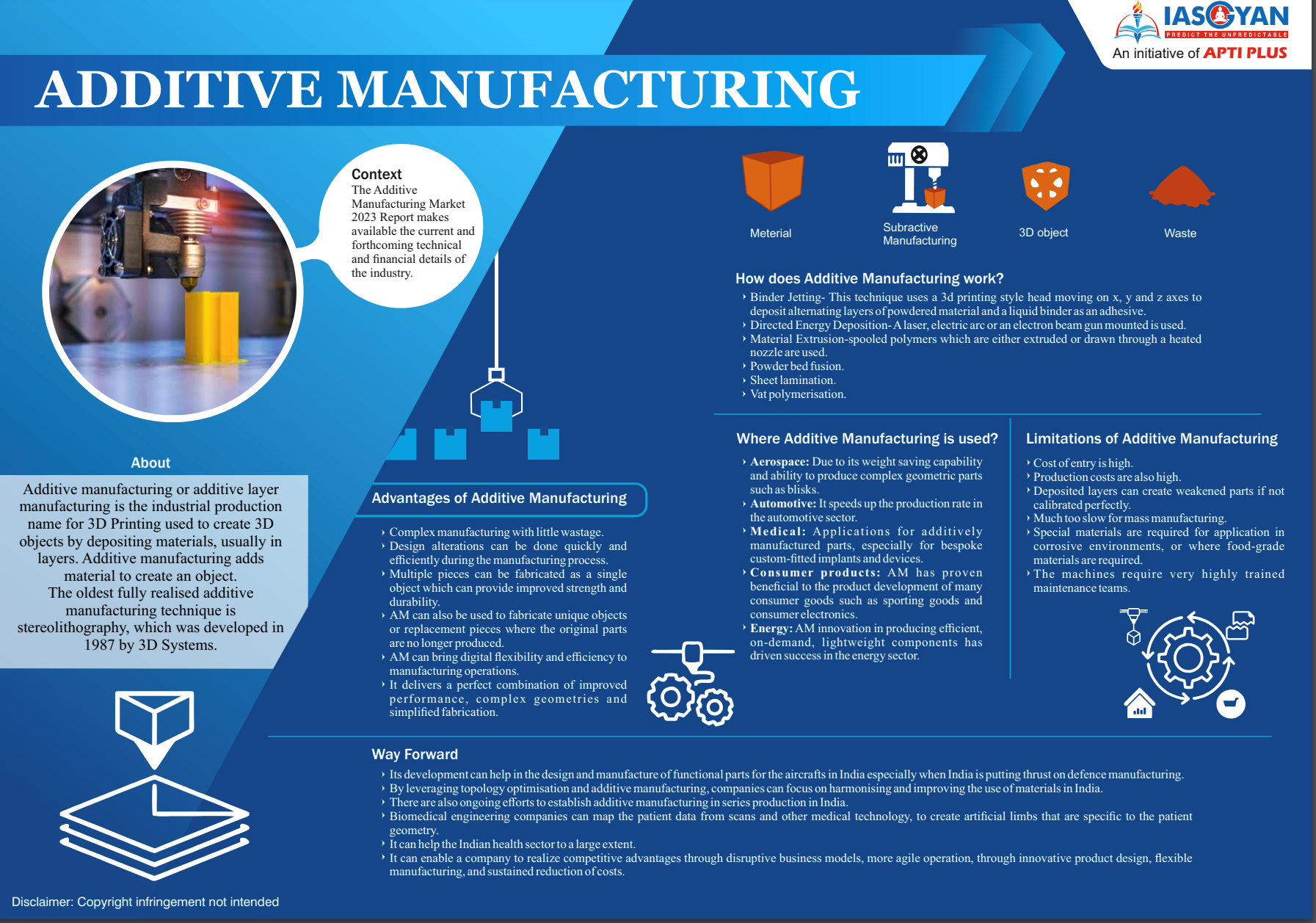Free Courses Sale ends Soon, Get It Now


Free Courses Sale ends Soon, Get It Now



Source: IndianExpress
Disclaimer: Copyright infringement not intended
Context
Details
Advantages of 3D Printing
Application in ISRO's PS4 Engine

Must read articles:
Sources:
|
PRACTICE QUESTION Q. Discuss the significance of additive manufacturing, particularly 3D printing, in the context of industrial development and innovation. Highlight its potential impact on various sectors, challenges, and future prospects. (150 words) |
© 2024 iasgyan. All right reserved